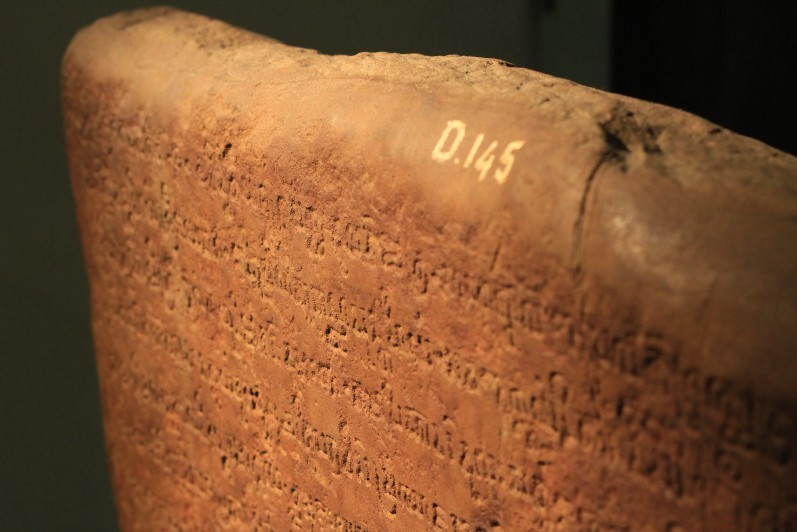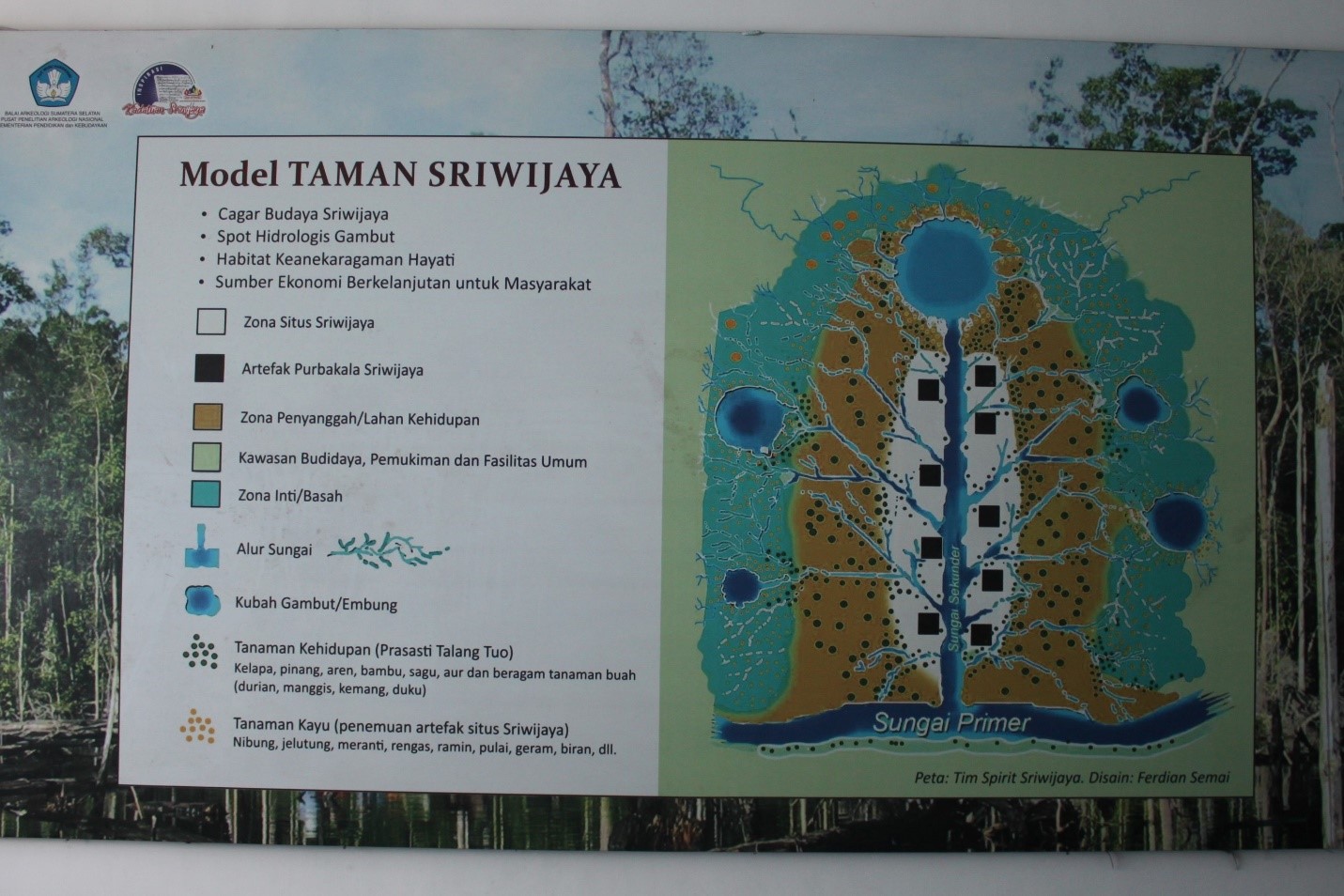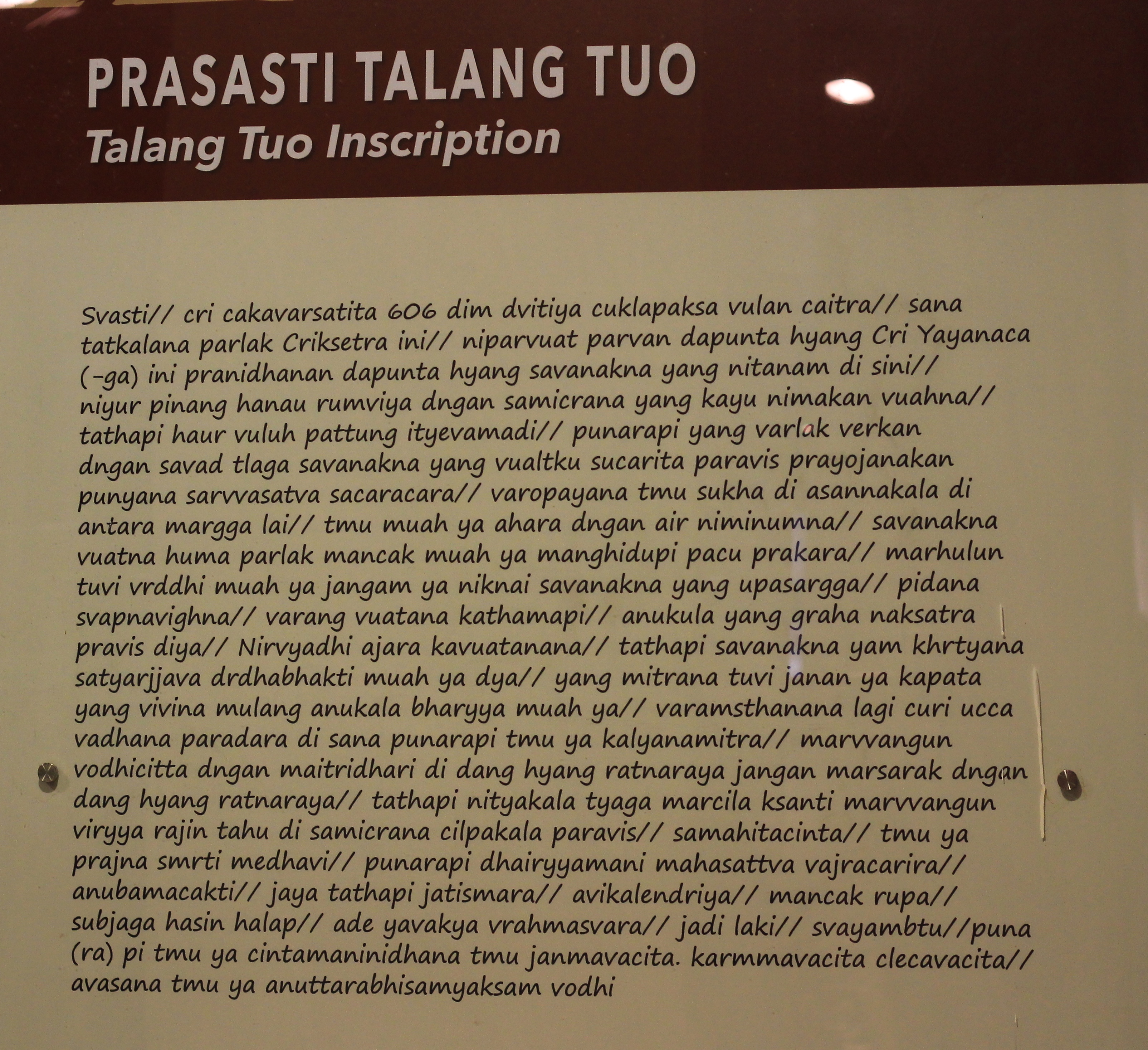Woman Fighting Oppression: Sumarni Laman
By Pantau GambutTalang Tuwo Inscription, Local Wisdom Protects Peat Ecosystem (2)

The Talang Tuwo inscription is a relic of the 7th century Srivijaya Kingdom which holds the values of environmental preservation. This article is the second part of the story about the author’s attempt to trace the location of the relic and the changes in the surroundings due to neglecting ancestral values.
Based on the archaeologists’ researches, the Talang Tuwo inscription contains 14 lines of Pallava script, which is a script from the southern Indian region, written in Old Malay language. This inscription is presumed to be dated from the year 606 Saka or 684 AD. The inscription was found on 17 November 1920 in the west of Palembang City which is now under the Talang Kelapa Village, Alang-Alang Lebar Subdistrict. The news of the discovery was published in the fourth quarter archaeological report, OV. 1920:117, and Louis Constant Westenenk (1921:5).
Yenrizal explained that the Talang Tuwo inscription tells about the establishment of the Sri Ksetra garden by King Srijayanasa or Punta Hyang Sri Jayanasa, who was the king of Srivijaya in the 7th century. This inscription contains an order from the King to his people regarding the plan to beautify the area by regulating settlements, plantations, water, ponds, and gardens. The King asked the people to plant certain plants which yields could be used for their prosperity. The inscription also contains prayers in Buddhism.
Dr. Yenrizal M.Si, an environmental communication lecturer at the Faculty of Social and Political Sciences, UIN Raden Fatah Palembang, explained that the Talang Tuwo inscription was found as a stone slab. At that time, the surrounding area was hills traversed by a river and inhabited by many Sumatran tigers. According to Yenrizal, the book "Environmental Values in the Talang Tuwo Inscription" states that the inscription was found by a man named Alwi Lihan, a farmer from Meranjat Hamlet, on 17 November 1920. Alwi then took the stone slab to the residency in Siguntang Hill and handed it over to the then resident of Palembang, L.C. Westenenk.
After the original inscription was moved to the National Museum in Jakarta in 1920, with inventory number D.145, a duplicate of the inscription was made and placed at the same place. But in 1980, the duplicate was stolen by irresponsible people.
According to Yenrizal's book, the location where the inscription was found was marked by a tomb of Mbah Banua. This tomb was located on the back of a small hill surrounded by valleys traversed by small rivers that flowed into the Musi River. This area was once a customary forest belonging to the Talang Kelapa clan. Customary forests are intended to be preserved as jungles. The local residents said that until the early 1980s, there were still many types of animals in this area, such as tigers, deer, mouse-deer, and muntjacs. Various plants as listed in the inscription could still be found, such as bamboo, coconut trees, and areca palms.
The Talang Tuwo inscription is unique. It has the longest text when compared to other Srivijaya relics, such as the Kedukan Bukit inscription, the Telaga Batu inscription, the Boom Baru inscription, and the Sabokingking inscription. Moreover, Talang Tuwo is the only inscription containing advice on the management of water, space, environment, gardens, and plants.
The following is the complete translation of the Talang Tuwo inscription:
On 23 March 684, the park named Sriksetra was created under the order of Sri Baginda Sri Jayanasa. His majesty’s intention is: May all plants planted here, coconut tree, areca palm, sugar palm, sago, and all kinds of trees, bear fruits that are edible, as well as haur bamboo, waluh, and pattum, et cetera. And may all other plants with the dams and ponds, and all of good deeds that I've contributed can be enjoyed for the benefit of all creatures, including the ones that can move around and the ones that cannot, and may this be the best path to achieve happiness.
If they are hungry or need a rest during their journey, may they find food and drink. May all the orchards that they cultivate have abundant harvest. May all kinds of animals that they keep be fertile, and so are their slaves. May the misfortunes not befell upon them, may they not be tormented because of being unable to sleep. Whatever they do, may all the planets and stars favor their fortunes, and may they be spared from sickness and old age during their efforts. And may all their subjects be loyal and devoted, also may all their friends not betray them, and may their wives be faithful. Moreover, wherever they are, may there be no thieves, or people using violence, killers, and adulterers.
Next to all those good wishes, may they have faithful friends. May from themselves born the thought of Boddhi and friendship from three Ratnas and may they not be separated from the three Ratnas. And may they always act generous, follow the rules, and be patient. May from themselves grew strength, diligence, knowledge of all kinds of arts. May their attention be focused, have knowledge, good memory, and intelligence. May they have tenacious thoughts, with diamond body just like the Mahasattvas with incomparable power, glorious, and remember their previous lives, with complete senses, fully formed, happy, smiling, calm, have a pleasant voice, the voice of Brahma.
May they be born as man and their very existence a blessing because of themselves. May they become the vessel of cintamani sacred stone, have the power of cycle of births, power upon karma, power upon stains, and may they finally achieve the perfect and grand spiritual enlightenment. (From original manuscript by George Coedes in 1930).
(To be continued in part 3)





